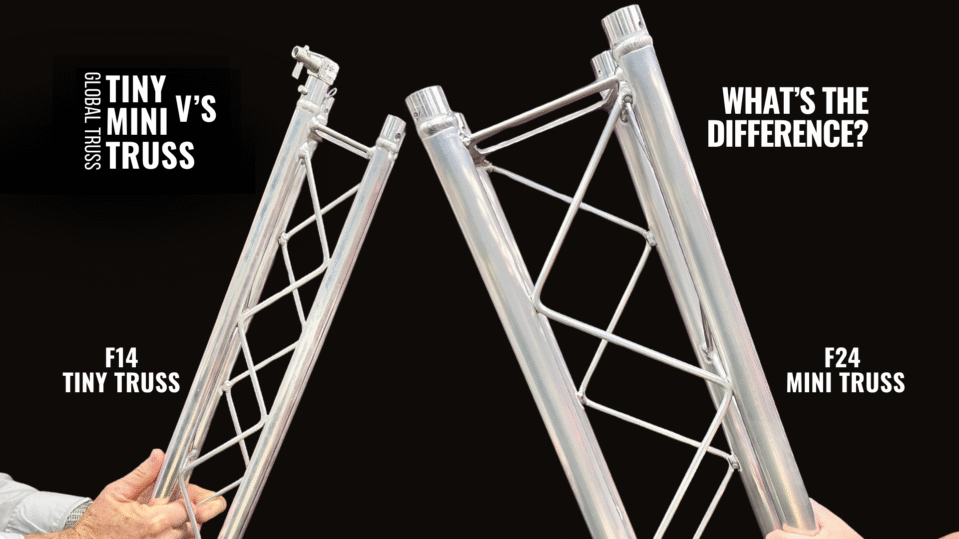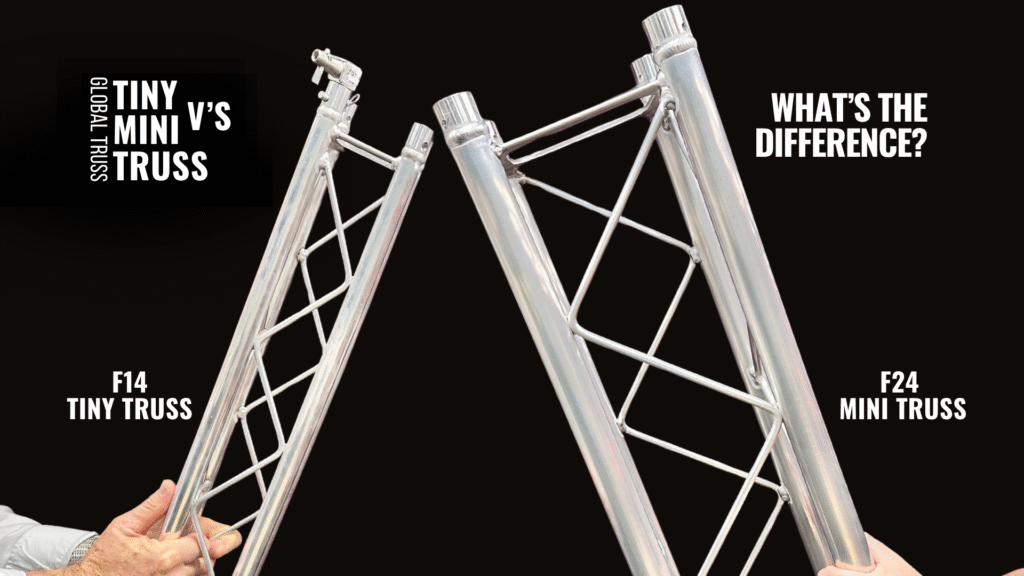
In the exciting and dynamic world of truss two often forgotten bastions of the range is the Mini and Tiny Truss, but what are they for? And when is the best time to use them.
First off, let’s understand what the differences between Tiny and Mini truss is
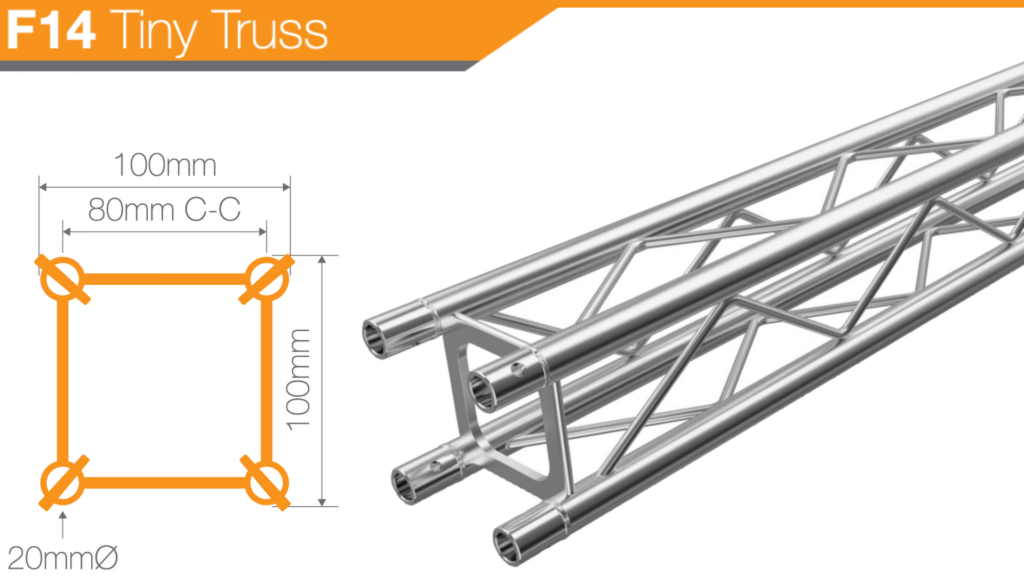
Tiny Truss (F14)
The smallest box truss size we supply. This truss utilises a small 20mm chord with a 2mm wall and is 100mm edge to edge or 80mm centre to centre. Available to purchase in up to 3m lengths along with standard corners and boxes. Tiny truss is rated up to a 7m span, please see table below for exact load limits.

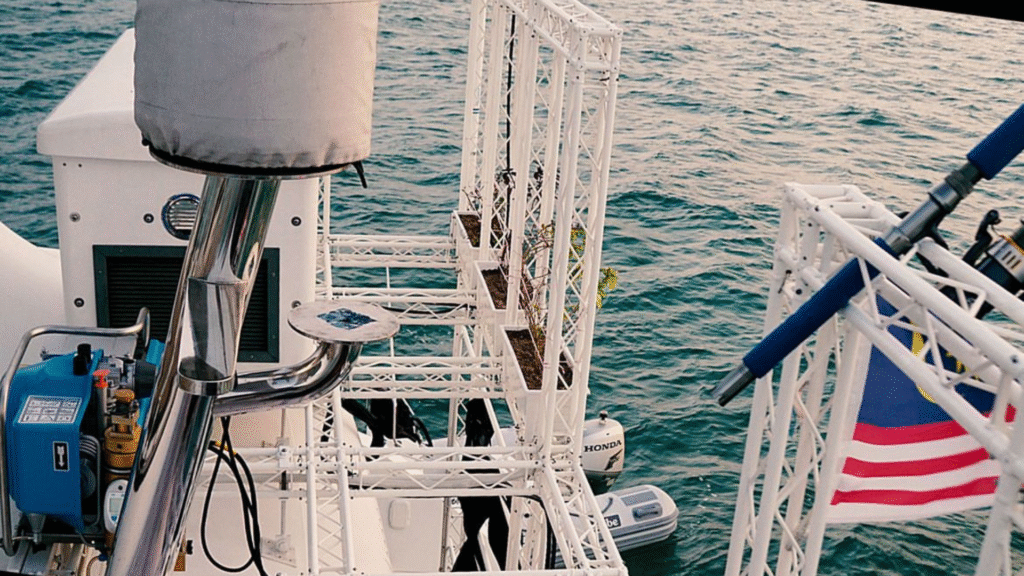
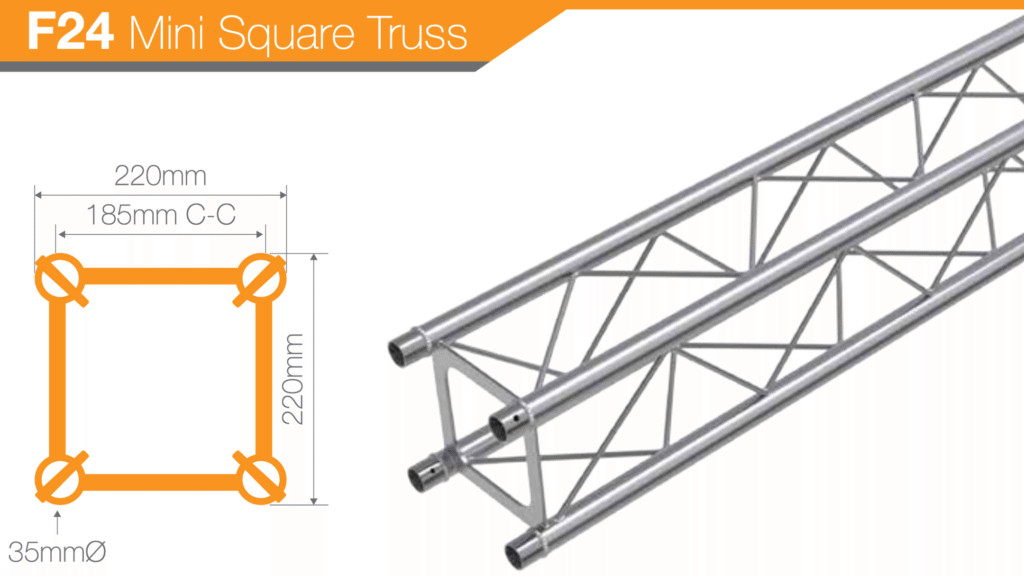
Mini Truss (F24 & F23)
The next smallest truss we supply. This truss has a 35mm chord with a 1.6mm wall and is 220mm edge to edge and 185mm centre to centre. Available to purchase in both box (F24I and tri (F23) truss varieties along with standard corners and boxes. Both the tri and box truss varieties of Mini Truss are rated up to a 10m span, please see table below for exact load limits.


But what does this mean?
While neither Mini or Tiny truss is going to be your new best friend for large productions, they both do fill a niche and there are plenty of excuses to bust them out.
For example, Mini Truss is perfect for small structural jobs, such as hanging microphones in a conference room, still maintaining some form of load bearing but being small enough to stay discreet. Other options could be used as creating small structures for trade shows and exhibitions or displays in museums. The options are endless as your imagination.
Tiny truss however is perfect for displays and very light duty structural purposes, perfect where you want the aesthetic of truss but don’t require the load rating, things such as retail displays, signage arches and decorations.
Other considerations
It may seem obvious, but a smaller truss means lighter weight, so utilising Tiny & Mini truss can make bump in and outs quicker, easier and cut down on labour costs which is always the goal. However, this lighter weight can also be a negative as it may require more bracing and weight to hold in place.
In conclusion.
Not suitable for every application, both Tiny and Mini Truss most definitely have their place in the range of Global Truss Products and can be that hidden ace in the hole when you need something smaller and lighter.ns tailored to your equipment and application, contact our team today.

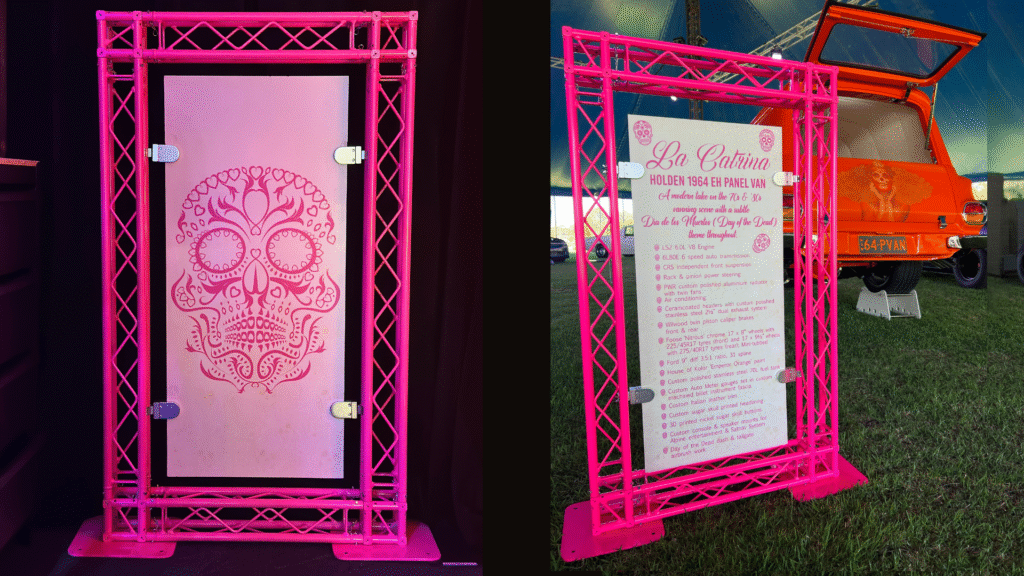
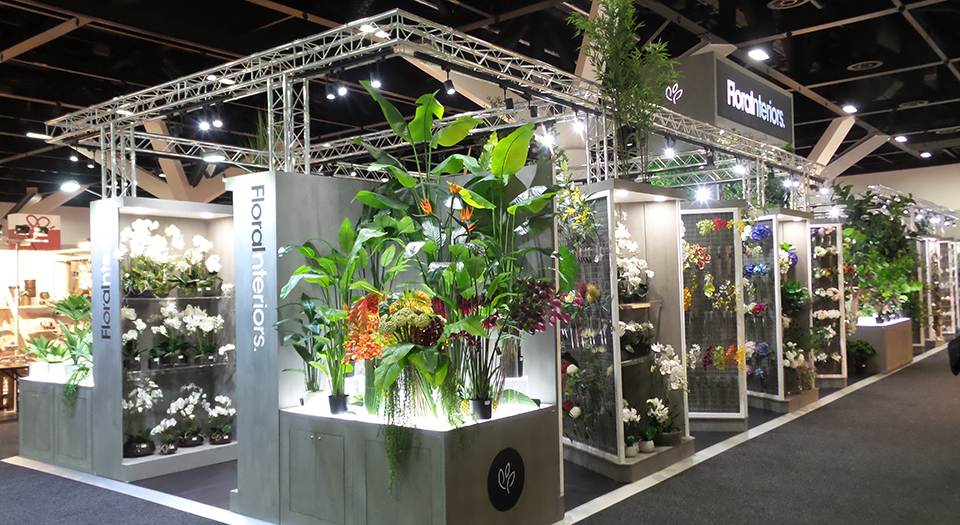
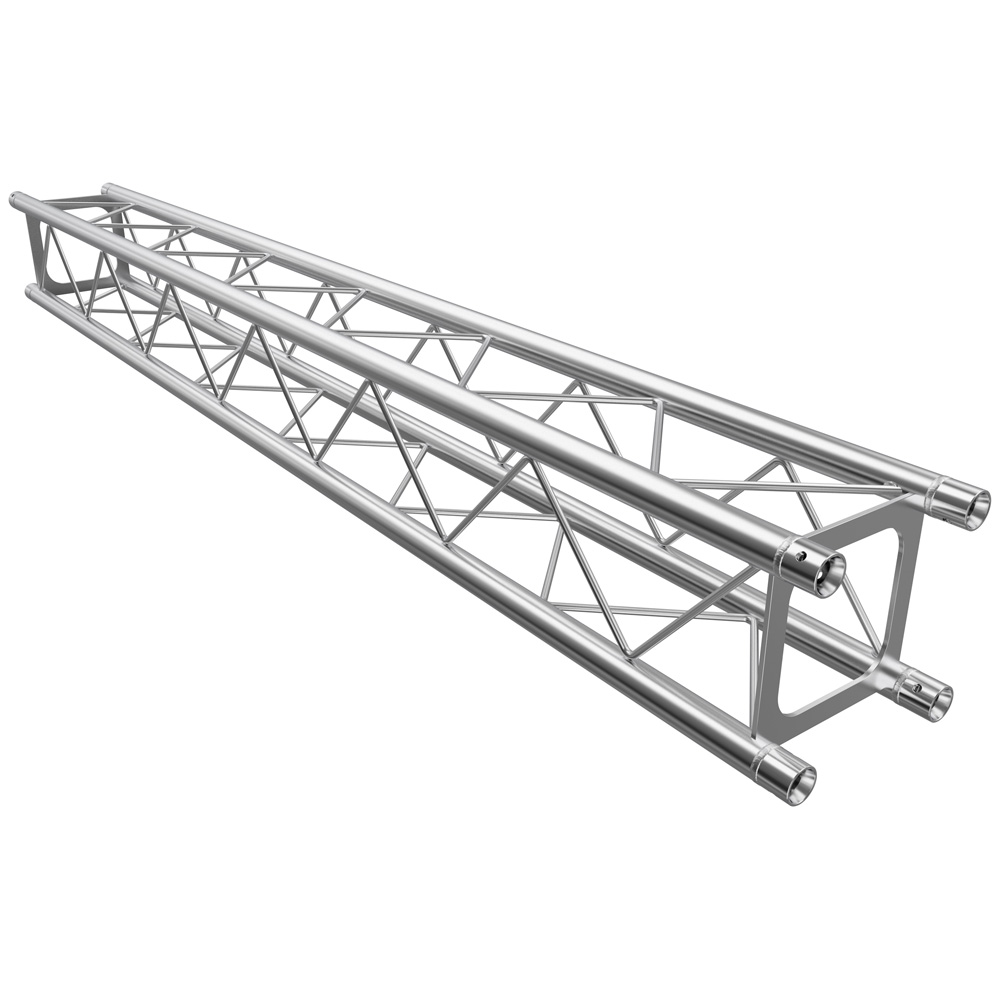
F24 (220mm Truss)
F24 Square Mini Truss is a light-duty truss with 220mm x 220mm outer dimensions and 35mmØ chords. This Truss is appropriate where light-duty structural capacity is necessary, but space is limited.
F24 Square Truss has a more subtle aesthetic than larger Trusses. It is ideal for retail displays, museum exhibits, trade fairs and exhibitions, signage and banners, pubs, clubs and restaurants. The availability of a wide range of straight lengths, radials and junctions gives you the ability to build an enormous range of shapes and forms using F24 Square Truss. Being square, the F24 Truss has greater modularity than its triangular equivalent, thanks in part to a six-way cube junction, the building block of a square truss system.
A range of 35mmØ clamping accessories complements the Truss components. Custom components can be designed by the DQ team and made to order.
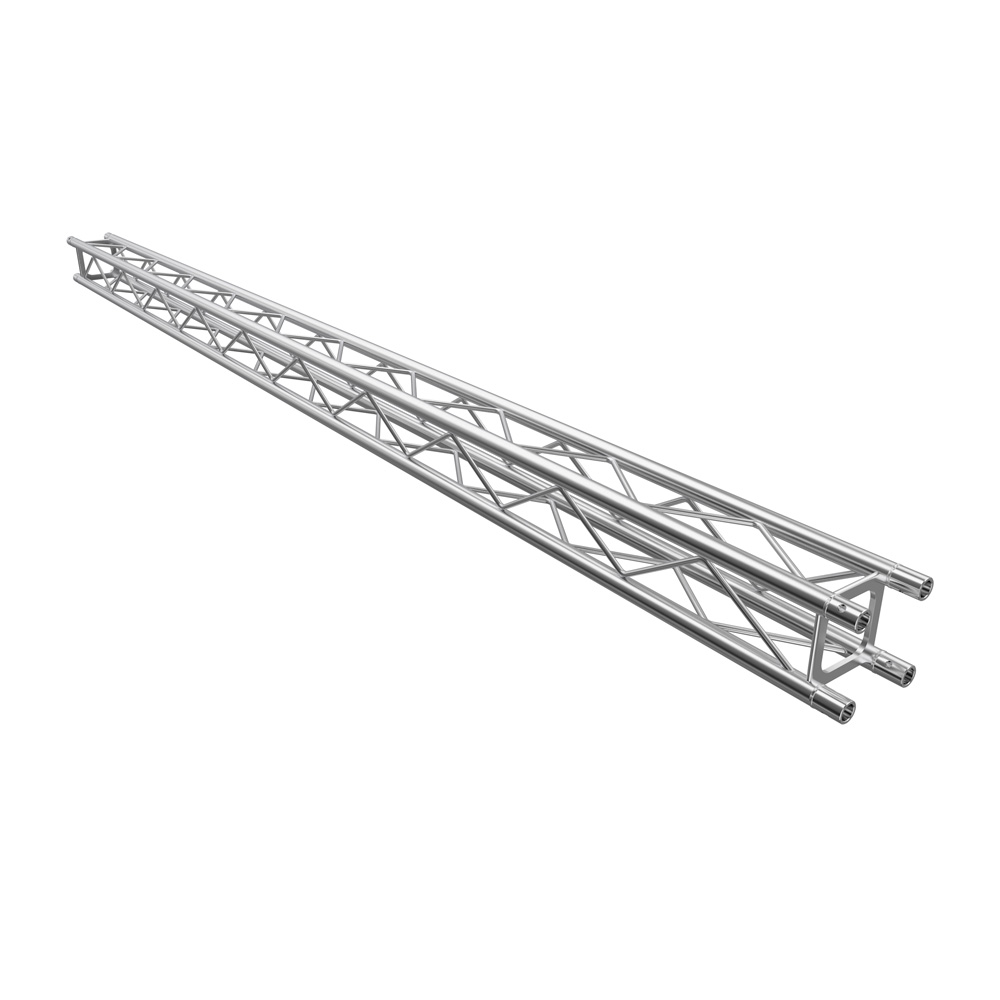
F14 (100mm Truss)
F14 Tiny Truss is the smallest of the Global Truss family at only 100mm x 100mm with 20mmØ chords.
Predominantly used for decorative purposes such as retail displays, museum exhibits, and wedding decoration displays, the “scaled-down” F14 Truss is dainty in appearance whilst still fulfilling a very light duty structural purpose. The square Truss is available in straight lengths, circular components and a cube junction, enabling the construction of straight runs, rectangles, circles and arches.
In addition, tiny 20mmØ couplers are available to attach items to the chords. Custom components can be designed by the DQ team and made to order.

